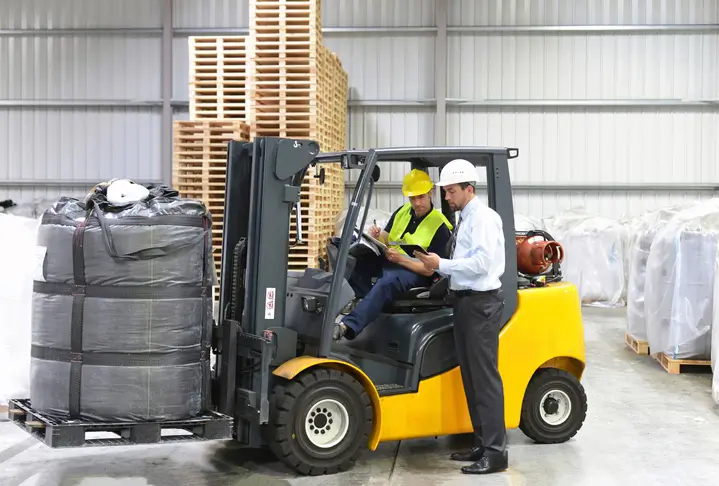What is Meant By OSHA Courses in the Construction Industry
The Occupational Safety and Health Administration (OSHA), established in 1971, is a vital federal agency dedicated to ensuring the health and safety of workers in the United States. Originating from the Occupational Safety and Health Act of 1970, this legislation emerged due to rising concerns about workplace accidents, with 14,000 worker deaths and 2.5 million disabled workers annually in the years preceding its enactment.
OSHA courses’ primary mission is to prevent hazardous working conditions, achieved through the implementation of safety compliance training courses. These courses cover essential lessons on mitigating occupational injuries, illnesses, and fatalities. Over the years, OSHA has significantly impacted worker safety nationwide by enforcing stringent workplace laws and standards.
Through its commitment to education, outreach, and assistance, OSHA has played a pivotal role in reducing work fatality rates by more than half and achieving substantial declines in injury and illness rates in targeted industries like textiles and excavation. Overall, OSHA stands as a cornerstone in fostering safer working environments across diverse sectors.
Persistent Safety Challenges in Construction

Despite Technological Advances, in construction safety equipment, technology, and training, the construction industry still experiences persistent safety issues leading to high rates of both fatal and nonfatal injuries.
Disproportionate Fatality Rates:
Construction Industry Vs. U.S. Labor Force
While construction workers constitute only 5% of the U.S. labor force , a staggering 18% of worker deaths occur in this industry. Construction ranks second in workplace deaths, trailing only behind truck drivers. This disproportion highlights a critical concern for the safety of construction workers.
Alarming Statistics
In 2021, 951 construction workers lost their lives on the job, underscoring the severity of the issue. Additionally, the construction industry had the sixth-highest rate of all recordable cases of injury and illness in the workplace during the same year. These statistics emphasize the urgent need for targeted efforts to enhance on-the-job safety within the construction sector.
The persistently high fatality and injury rates in construction underscore the necessity for an ongoing commitment to improving safety measures. Efforts should encompass a holistic approach, incorporating technological innovation, comprehensive training programs, and regulatory initiatives to create safer working conditions for construction professionals.
Employee Rights in the Construction Industry and OSHA Programs

OSHA not only safeguards worker safety but also advocates strongly for employee rights. Employees, as per OSHA regulations, possess the right to access and obtain copies of OSHA regulations and can request information concerning workplace hazards and precautions. They are empowered to initiate OSHA inspections when suspecting hazardous conditions or violations at their workplace.
Crucially, federal laws and OSHA itself shield whistleblowers who report potential violations from retaliation. In line with its mission, OSHA operates programs like the Alliance Program, fostering collaboration among employers, labor unions, government agencies, and educational institutions to jointly prevent workplace injuries and illnesses. This approach demonstrates OSHA’s commitment to upholding workers’ rights and ensuring a safe work environment.
Most Essential OSHA Courses

A total of 40 OSHA construction courses are offered and among the following are some of the OSHA construction safety courses offered by OSHA;
OSHA 10-Hour Construction Course:
Overview: This course is one of the most studied OSHA construction safety and health course. It provides basic awareness training for entry-level workers on common workplace hazards.
Credit Hours: 10-Hours
OSHA 30-Hour Construction Course:
Overview: In-depth training for supervisors and workers with safety responsibilities. This course is widely opted for the supervisors and management people to restrain from the sudden incidents.
Credit Hours: 30-Hours
Construction Focus Four Training:
Overview: Targets “Fatal Four” hazards falls, struck by objects, electrocutions, and caught-in/between. This type of course is essential for general industry and marine industry also, this course is short but most important to save the lives of the workers.
Credit Hours: Varies (often part of the 30-hour course)
Scaffold Safety Training:
Overview: Addresses specific hazards associated with scaffold use in construction.
Credit Hours: Varies
Fall Protection Training:
Overview: Concentrates on preventing falls, a leading cause of construction injuries.
Credit Hours: Varies
Confined Space Entry Training:
Overview: Focuses on hazards and precautions when working in confined spaces.
Credit Hours: Varies
Excavation and Trenching Safety Training:
Overview: Addresses risks associated with excavation work and proper safety measures.
Credit Hours: Varies
Electrical Safety Training:
Overview: Provides guidance on electrical hazards and safe work practices.
Credit Hours: Varies
Hazard Communication Training:
Overview: Covers communication of chemical hazards, including labeling and SDS. Also practically performed the actions.
Credit Hours: Varies
Personal Protective Equipment (PPE) Training:
Overview: Instructs on proper selection, use, and maintenance of personal protective equipment. Provide them with a Kit that contains safety appliances.
Credit Hours: Varies
Hand and Power Tool Safety Training:
Overview: Addresses safe use and handling of hand and power tools on construction sites. Proficient preachers make workers understand the dos and don’ts of construction pieces of equipment.
Credit Hours: Varies
Crane Safety Training:
Overview: Covers safe crane operation, rigging, and signaling procedures.
Credit Hours: Varies
Fire Prevention and Emergency Action Plans:
Overview: Focuses on preventing fires and proper emergency response on construction sites.
Credit Hours: Varies
Welding, Cutting, and Brazing Safety Training:
Overview: Addresses hazards associated with welding, cutting, and brazing processes.
Credit Hours: Varies
Noise and Hearing Conservation Training:
Overview: Covers the impact of noise on hearing and strategies for conservation.
Credit Hours: Varies
Material Handling and Storage Training:
Overview: Focuses on safe practices for handling and storing materials on construction sites.
Credit Hours: Varies
Lockout/Tagout (LOTO) Training:
Overview: Covers procedures to control hazardous energy during equipment maintenance.
Credit Hours: Varies
Walking-Working Surfaces Training:
Overview: Addresses safe practices for walking and working on various surfaces.
Credit Hours: Varies
Asbestos Awareness Training:
Overview: Provides awareness of asbestos hazards and safety measures during construction.
Credit Hours: Varies
Heat Stress Prevention Training:
Overview: Focuses on preventing heat-related illnesses in construction settings.
Credit Hours: Varies
There are other courses, and most interestingly all the courses are remotely available for workers. All the organizations that offer these courses are OSHA-certified and follow OSHA standards.
Benefits of OSHA Construction Safety Training

OSHA, the Occupational Safety and Health Administration, plays a crucial role in shaping workplace safety standards, emphasizing the significance of training to meet these standards in the construction industry. The effectiveness of the OSHA construction safety training course is directly linked to the thoroughness of worker training and subsequent compliance. Following are some of the benefits OSHA courses have on workers:
Workplace Safety Enhancement
One of the primary benefits of OSHA construction training lies in its role in educating workers about the myriad health hazards present in diverse construction environments. Given the unique challenges each construction site poses, proper training equips workers with the ability to identify potential hazards and empowers them with the knowledge to address these risks proactively. Additionally, well-trained workers possess the legal agency to take action if safety guidelines are neglected, reinforcing a culture of accountability.
Compliance with federal laws
Furthermore, OSHA construction training is integral to preventing violations of federal laws. Compliance with OSHA guidelines is not just a moral imperative but a legal requirement embedded in federal regulations. Failure to meet these standards renders employers accountable, emphasizing the necessity for organizations to adhere to OSHA training protocols to avoid federal law violations and associated penalties.
OSHA’s Impact on Public Safety
The impact of OSHA training extends beyond the immediate construction workforce to promote public safety. Construction sites, often situated in high-traffic areas, pose risks not only to workers but also to pedestrians, motorcyclists, and site managers. OSHA safety programs serve as a safeguard, preventing workplace injuries and contributing to overall public safety. This approach helps mitigate the financial burdens borne by both employees and employers following workplace incidents.
OSHA’s Role in Risk Mitigation
In the dynamic and ever-changing landscape of construction sites, OSHA training simplifies the safety challenge. Trained employees, attuned to the varying risk levels, can swiftly identify potential dangers and implement preventive measures. This not only reduces the likelihood of workplace injuries but also enhances overall operational efficiency.
OSHA training and employee empowerment
Finally, OSHA construction safety programs promote accountability. Employers, by investing in comprehensive training, empower their workforce to safeguard themselves. Beyond a concern for employee safety, this emphasis on training is rooted in the understanding that employers are legally liable for injuries and accidents.
Through OSHA compliance, a culture of accountability is fostered, ensuring that workers are not only aware of the risks but also equipped to actively participate in maintaining a safe working environment.
OSHA-The Safest Way For Construction Workers

OSHA courses in the construction industry play a vital role in safeguarding the well-being of workers and promoting a culture of safety. By addressing specific hazards, ensuring compliance with regulations, and fostering a safety-oriented mindset, these courses contribute to a significant reduction in workplace accidents and create a more secure and productive work environment.
As the construction industry continues to evolve, OSHA courses must adapt to emerging challenges and trends, ensuring that workers are equipped with the knowledge and skills needed to navigate the dynamic and often hazardous nature of construction sites.












